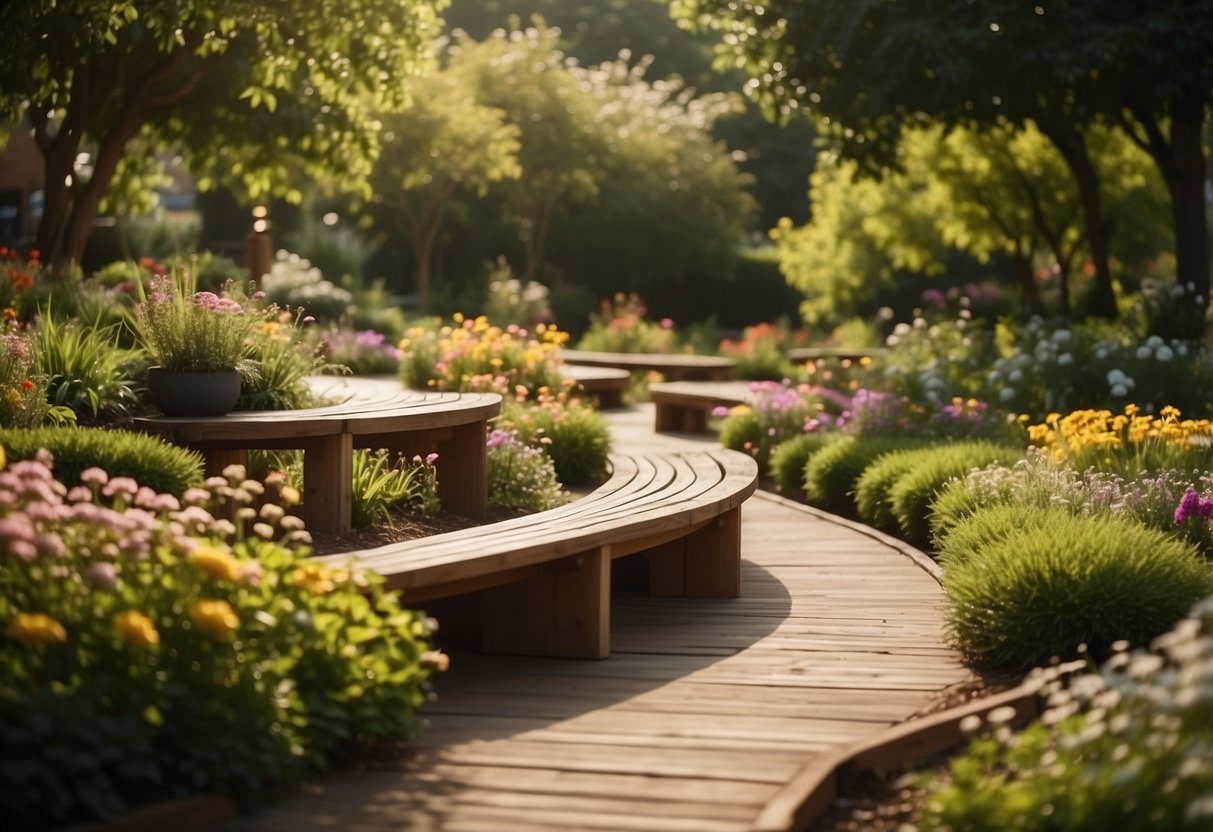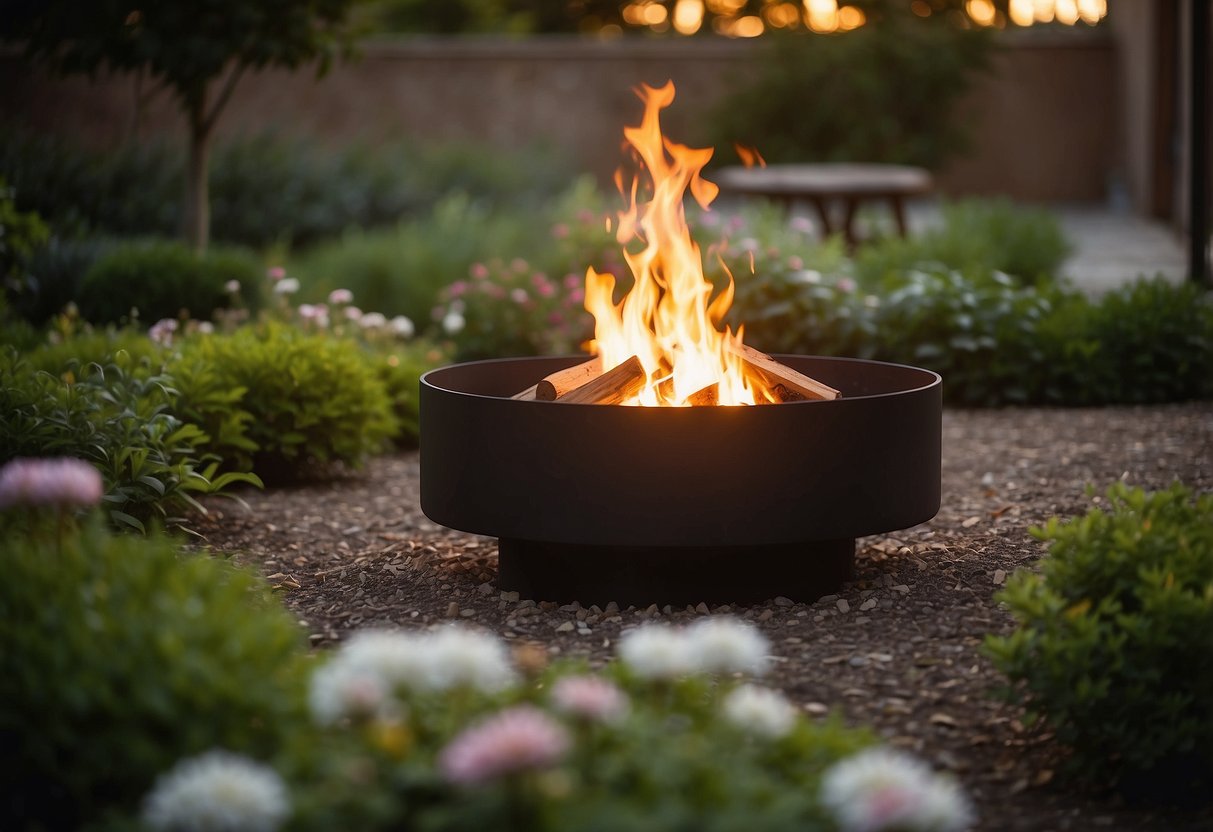Wood Chip Garden Ideas: Creative Ways to Transform Your Yard
Looking to add a natural touch to your garden without breaking the bank? Wood chips offer a versatile and eco-friendly solution for various garden projects. Whether you’re aiming to create beautiful pathways or enhance the overall look of your landscaping, wood chips are a fantastic option to consider.

Wood chips can be used in many ways to make your garden more inviting and manageable. From creating soft walking paths to improving soil health, the benefits are impressive. Plus, they’re easy to apply and maintain, making them ideal for gardeners of all experience levels.
1) Pathways and Walkways

Wood chip pathways are a great way to add charm to your garden. They offer a natural look that blends well with plants and trees.
To create a wood chip path, excavate the area to about one inch deep. This helps keep the wood chips from shifting.
Make sure the path is at least 18 inches wide. If you want to walk side-by-side with someone, try 36 inches. Reapply the wood chips whenever they start to break down.
2) Playground Mulch

Playground mulch is a popular option for creating safe and fun play areas. It provides cushioning to reduce the risk of injuries from falls.
There are different types of playground mulch available. Common options include wood chips and rubber mulch. Wood chips are known for their natural look and shock-absorbing properties. They are also relatively inexpensive.
If you want to learn more about playground wood chips, check out this detailed guide on playground wood chips.
3) Using Wood Chips as Mulch

Wood chips are an excellent mulch option for your garden. They help retain soil moisture and reduce weed growth.
Choose the right type of wood chips to avoid harming your plants. For instance, avoid black walnut and eucalyptus as they can be harmful.
Spread wood chips around your plants to create a neat and attractive garden. This can also help with soil temperature regulation.
Learn more about wood chip mulch benefits.
4) Wood Chip Composting

Wood chip composting is a great way to recycle yard waste and improve your garden soil. Start by gathering fresh wood chips and breaking them into small pieces. Smaller chips decompose quicker.
Mix your wood chips with nitrogen-rich materials like kitchen scraps and yard waste. The right mix should have a carbon-to-nitrogen ratio between 25:1 and 30:1.
Water the compost pile often and turn it regularly to keep it aerated. A balanced mix of moisture, air, and materials helps the compost process move faster. Enjoy healthy soil for your garden!
5) Creating Raised Beds

Raised beds filled with wood chips can be a great idea for your garden. They provide excellent drainage and improve soil quality.
Start by building a frame for the raised bed. You can use wood, bricks, or stones.
Fill the frame almost to the top with wood chips. Over time, these chips will break down and nourish the soil, helping your plants grow better.
Make sure to check the beds regularly and add more wood chips as needed. This keeps your garden healthy and looking nice.
You can see examples of this from gardeners who filled raised beds with wood chips.
6) Wood Chip Fire Pits

Wood chips can create a cozy and safe area around your fire pit. When planning your fire pit, use wood chips to give the space a warm, rustic feel.
Lay down a thick layer of wood chips to help prevent weeds from growing around your seating area. This also provides a cushioned surface for people to walk on.
Wood chips are also great for reducing mud and dust around the fire pit. They add a natural look that blends well with outdoor plants and decorations. Adding a few benches or logs around the pit can enhance the experience.
7) Garden Borders and Edging

Using wood chips for garden borders and edging is a fantastic idea. They are affordable, natural, and blend well with most garden designs.
You can create clean lines and separate garden areas, making your garden look tidy and organized.
For a more formal look, consider using cedar lumber, which is long-lasting and resistant to decay and insects.
Wood chips also soften the look of rigid garden lines, giving a warmer and more inviting feel to your outdoor space.
8) Wood Chip Path Features

Wood chip paths are a great way to add a natural feel to your garden. They look charming and rustic. The texture provides a non-slip surface, which is perfect for rainy days.
You can shape these paths to fit any garden layout. They can be narrow winding trails or wide enough for two people to walk side by side. Maintenance is also simple. Just top them up with fresh wood chips each year to keep them looking neat.
For an easy and cost-effective option, you can create a path using wood mulch combined with gravel or stepping stones.
9) Wood Chips for Erosion Control

Using wood chips for erosion control is a smart idea. They can help prevent soil erosion on slopes and hilly areas.
Wood chips act like a natural barrier. They slow down water runoff, allowing the soil to absorb more water.
You can spread a thick layer of wood chips over troubled areas. This keeps the soil in place and reduces erosion.
Learn more about using wood chips for erosion control.
10) Under Tree Planting

Using wood chips under trees can create a lovely garden area. They help prevent weeds and keep the soil moist.
Wood chips also protect tree roots and improve soil health over time. You can easily create a path or seating area under a tree with wood chips.
Consider adding flowers or small plants that thrive in shade. This can make the area more vibrant and inviting.
Benefits Of Wood Chip Gardens

Wood chip gardens can transform your gardening experience. They enrich the soil, help retain moisture, and keep weeds at bay. Let’s delve deeper into each of these benefits.
Soil Enrichment
Using wood chips in your garden can boost soil health. As wood chips decompose, they add organic matter to the soil. This process improves soil structure, making it easier for plant roots to penetrate and grow.
Nutrients released from the wood chips nourish your plants. Over time, this reduces the need for synthetic fertilizers. Additionally, earthworms and beneficial microbes thrive in soil with wood chips, further enhancing soil quality.
To maximize benefits, use a variety of wood types. Hardwoods break down slower, offering long-term benefits, while softwoods decompose quicker, providing immediate nutrients.
Moisture Retention
Wood chips are excellent for keeping soil moist. They act as a barrier, reducing water evaporation from the soil. This is particularly useful in dry climates or during hot summer months.
Applying a thick layer of wood chips around your plants can drastically cut down on your watering needs. The mulch keeps the soil cool and retains moisture, ensuring your plants have a consistent water supply.
In turn, this helps plants grow stronger and more resilient. You can also save time and resources by not having to water as frequently.
Weed Suppression
A thick layer of wood chips can effectively suppress weed growth. By blocking sunlight from reaching weed seeds, wood chips prevent them from germinating and growing.
Less time spent weeding means more time enjoying your garden. Additionally, using wood chips reduces the need for chemical herbicides that can harm the environment.
For best results, apply wood chips at a depth of 2-3 inches around your plants. This thickness is sufficient to keep most weeds from sprouting and causing problems in your garden.
Using wood chips in your garden offers multiple benefits, making your gardening tasks easier and more efficient.
Types Of Wood Chips For Gardening

Selecting the right type of wood chips can greatly enhance your garden’s health and appearance. Each type provides unique benefits and potential drawbacks.
Hardwood Chips
Hardwood chips typically come from trees like oak, maple, or cherry. These chips are dense and decompose slowly. This makes them excellent for long-lasting mulch. Hardwood chips can help with moisture retention in soil, reducing the need for frequent watering.
They can also help improve soil structure as they break down. Be cautious, though, as some hardwood chips, like black walnut, can be toxic to certain plants. Always make sure to know what kind of hardwood you are using in your garden.
Softwood Chips
Softwood chips usually come from pine, spruce, or fir trees. These chips decompose faster than hardwood, making them a good option for temporary ground cover. They also add some acidity to the soil, which can benefit plants that prefer acidic conditions.
However, because they break down quickly, they will need to be replenished more often. Softwood chips are generally lighter than hardwood chips and can be easier to spread.
Colored Wood Chips
Colored wood chips are often made from various types of recycled wood and dyed to add visual appeal to your garden. They can come in a range of colors such as red, black, or brown, allowing you to match or contrast with your garden’s aesthetic.
These chips can give a neat and vibrant look to paths and landscaped areas. Be mindful of using high-quality, non-toxic dyes to ensure safety for plants and soil. Colored chips add beauty but may not offer the same soil benefits as natural wood chips.







